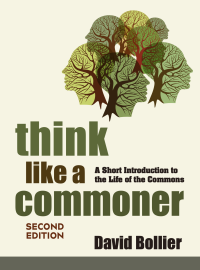In Amsterdam three weeks ago, there was a gala film premiere for Big Buck Bunny, a computer-generated animated movie made completely with open source software. At ten minutes long, Big Buck Bunny is more of an animated short than a film. Still, it is very funny — and it proves the power of open-source software as a creative platform and the viability of an open-content business model based on foundation support, pre-sales and commercial sponsorship.

Big Buck Bunny is about a kind-hearted, fat, white bunny who is abused by three cute but nasty stone-throwing rodents. The bunny quietly endures their abuse until they smash a beautiful butterfly with a rock, at which point the Big Buck Bunny goes berserk. He preps himself to become a warrior and teach the bullies a lesson. Unfortunately, I missed the premiere (too exhausted from jet lag), but the trailer can be watched here.
The film is not generally available yet because the producers’ business plan requires that they release the DVD to upfront buyers first, who happen to be the film’s investors as well. Besides the film, the DVD will include the entire database used in making the film, such as animation data, characters and textures. (Making fur and grass are not easy things for animators to do!) When released, the DVD it will be licensed under a Creative Commons Attribution 3.0 license. This means that the film’s content will be free for anyone to use so long as the production studio, the Blender Institute, is acknowledged.
The Blender Institute, an affiliate of the Blender Foundation, is a studio for open-content projects located in the Amsterdam docklands. Started in August 2007, the Institute employs 14 full-time people who are obsessed with improving its three-dimensional open source software, the so-called Blender 3D suite of software. The software is widely used for modeling, animation, rendering, editing and other tasks associated with 3D computer-generated animation. Interestingly, the user community that revolves around the Blender 3D suite is quite large and international.
The Institute is directed by Ton Roosendaal, who ran an animation studio in the 1990s. Through the Blender Foundation, which he chairs, Roosendaal aims to start a virtuous cycle of economically sustainable creativity using open source software, Creative Commons licenses and talented programmers and artists. “We give programmers the freedom to do their best, and what they want to do is improve the technology,” he told the Economies of the Commons conference in April 2008. “The market is too hyper-rational and nailed down and filled with limits,” he explained. “Open source is free of most of these constraints.”
The open-content business model that the Blender Institute is pioneering is still young and experimental. Yet Blender’s ability to make such high-quality animation on a fairly modest budget — and no worries about illegal downloads or digital rights management — should send a sobering signal to Hollywood, if anyone there is listening.
Big Buck Bunny (code named the “Peach Open Movie”) took only six people six months to produce. It is a stunning high-definition animation that could pass for something produced by Pixar. When Roosendaal and his colleagues visited Pixar, in fact, they found an army of animators carrying out very narrow assignments—animating the wagging of a tail, for example. The programmers envied the freedom enjoyed by the Blender team, including the ability to make characters and plotlines that major studios would consider too edgy and off-putting to the mass market.
If you want to glimpse a fledgling business model for open-source animation and film, check out the release and distribution plans for Big Buck Bunny here. The DVD (and free downloads) should be available at the end of May. In the meantime, there is unconfirmed word that a pirate version of the film was shot directly from the screen in Amsterdam. I was unable to locate it online, but I found my mind reeling at the very idea of this “transgression”: a pirate version of an open-content film. Is such a thing possible?











Recent comments